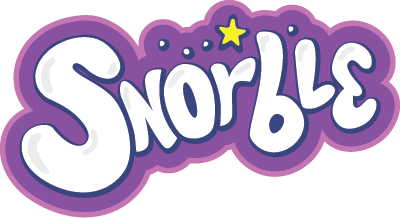As children grow, they favor one hand over the other. You may notice that your kiddo picks up an object with their left hand more than their right or uses both hands equally. The development of handedness in children coincides with their acquisition of language so by the time they hit age four they’ll either be lefties or righties.
The science behind handedness
Our brains have two hemispheres, the right and the left. These hemispheres control motor action on the opposite side of our body. However, both sides of our noggin aren’t equal in their control of behaviors, thus resulting in a dominant hand emerging. This is called cerebral lateralization or hemispheric lateralization. The great thing about this lateralization is that it lowers the chances of both sides competing for response control and helps with the formation of different processes and skills like language. If both sides of our brains were vying for the same skill, we wouldn’t be able to acquire that skill at all.
What does each hemisphere specialize in?
The right hemisphere is where we get our creativity, emotional intelligence, ability to recognize faces, the use of our imaginations, and intuition. The left hemisphere is where we find our language, logic, and critical thinking skills; our ability to understand numbers, and reasoning.
Did early humans favor one hand over the other too?
Back in the day, which may’ve been a Tuesday (we don’t have records that date back 75 million years ago because our elders didn’t have smartphones), our ancestors, the first homo sapiens, started to create tools to help them get by. The tools they made were an early predecessor to the human communication system we use today. Moreover, the basic hand gestures used by early man coupled with these tools morphed into the brain language syntax we use today. The more our tools and hand gestures evolved, the more our brains could process what someone was saying to us, pointing at, and describing. With the evolution of our basic sensory and motor abilities, comes handedness.
Let’s say your four-month-old is unsurely reaching for you with both hands. This is because, at this age, their brain is still developing in both hemispheres. By the time they reach toddlerhood, your kiddo may be able to point, grab, and reach confidently with both hands which in turn, sets the stage for their overall development of language. Finally, by the time they’re speaking in full sentences (around ages 3-5) their dominant hand will come through.
How many people are righties vs lefties?
With 90% of the population being right-handed, it’s no wonder that lefty scissors are hard to come by. The writer of this article knows first-hand - pun intended - what it’s like to be in the second grade and not be able to participate in arts and crafts to their full potential due to the lack of child-safe lefty cutting tools. Let’s just say her parents’ fridge was covered in jaggedly cut shapes that were supposed to be pumpkins, dinosaurs, or whatever the project was.
Cool story. Anyway, where are the other 10% (the lefties) found? According to Statista here’s a breakdown of where there are larger left-handed populations:
- The Netherlands 13.23%
- The United States 13.10%
- Canada 12.80%
- The United Kingdom 12.24%
- France 11.15%
- Germany 9.83%
- Spain 9.63%
- India 5.20%
- Japan 4.70%
- China 3.50%
Besides right and left-handed people, 1% of the world’s population is ambidextrous, meaning they can perform tasks with either hand without favoring one hand over the other. There is also mixed-handedness in which someone favors one hand for certain tasks like writing. Ambidexterity is skills-based whereas mixed-handedness is based on preference and environment. For example, some professional athletes may be left handed but throw or catch with their right because it feels better or when they were growing up they didn’t have special equipment for their left side.
Can the development of handedness in children be predicted?
It’s hard to predict if your kiddo will be right- or left-handed. Although there is a possibility that a child with left-handed parents will be a lefty too, heredity only accounts for 25% of the kid’s chances of favoring the same hand as their folks.
Because language skills are tied to handedness, it’s more important to focus on your child’s social-emotional development and ensure they’re equipped with healthy habits instead of trying to guess whether you’ll need to purchase special scissors for arts and crafts. Plus, this isn’t the 1600s. If your child is left-handed, they’re probably not a witch.
Photo by Phil Hearing on Unsplash
Sources:
- https://www.frontiersin.org/articles/10.3389/fpsyg.2016.00410/full
- https://theconversation.com/how-childrens-brains-develop-to-make-them-right-or-left-handed-55272#:~:text=As%20children%20grow%20older%2C%20they,about%20four%2Dyears%2Dold.
- https://www.whattoexpect.com/toddler/ask-heidi/left-handed.aspx
- https://www.betterhealth.vic.gov.au/health/healthyliving/left-handedness


